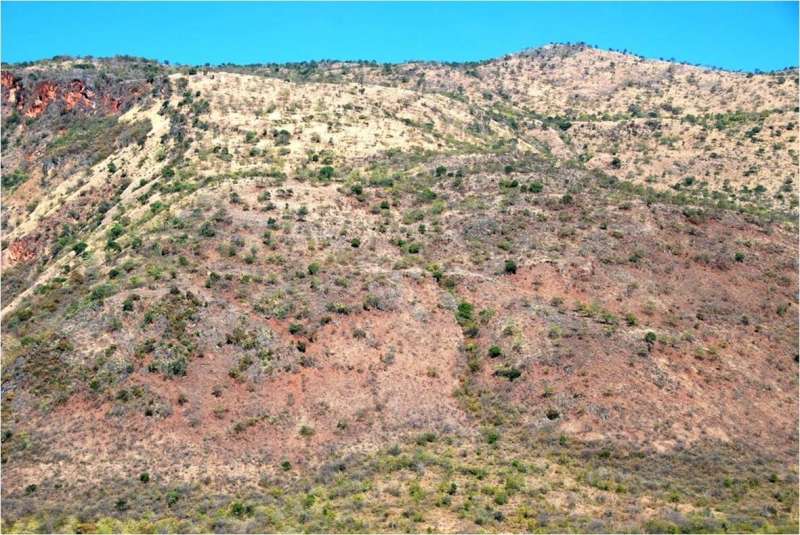Trade-offs exist in hydraulic and mechanical traits of plants in Chinese savanna

Evergreen and deciduous species coexist in tropical dry forests and savannas. Previous studies have shown that they exhibit divergent strategies of drought tolerance and hydraulic safety under prolonged seasonal drought. However, the ecological strategies in hydraulic efficiency and mechanical strength (two major functions of the xylems of woody plant species) have not been well characterized for Chinese savanna woody species with contrasting leaf phenology.
In a study published in Tree Physiology, researchers from the Xishuangbanna Tropical Botanical Garden (XTBG) of the Chinese Academy of Sciences illustrated the hydraulic and biomechanical adaptations of Chinese evergreen and deciduous savanna species to long-term dry-hot environments.
The researchers measured 14 xylem functional traits related to hydraulic efficiency and biomechanical strength, as well as minimum water potential in woody species (seven evergreen species vs. thirteen deciduous species) in Yuanjiang savanna ecosystem, southwest China.
They further evaluated the potential differences in hydraulics and biomechanics between evergreen and deciduous savanna species, and elucidated the possible tradeoffs and associations between hydraulic and biomechanical functions and underlying anatomical traits.
They found a distinct divergence in hydraulic efficiency and mechanical strength in Chinese savanna species with contrasting leaf phenology, revealing conservative and acquisitive life-history strategies for evergreen and deciduous species, respectively. Deciduous species had a higher xylem hydraulic efficiency, whereas evergreen species had higher mechanical strength.
Furthermore, there were trade-offs between xylem hydraulic efficiency and mechanical strength across species and within evergreen and deciduous groups. The trade-offs were modulated by a suite of traits, including wood density, vessel and fiber traits, and fiber content. The xylem hydraulic efficiency was mainly driven by vessel diameter, while high levels of xylem mechanical strength were associated with wood density, neutral detergent fiber, and acid detergent fiber.
They also found that the pairwise relationships between traits were phylogenetically independent. None of the hydraulic, mechanical, anatomical, or chemical traits showed phylogenetic signals.
"Our study provides new information to understand the hydraulic and biomechanical properties and ecological strategies of savanna species in long-term dry-hot environments," said Zhang Shubin of XTBG.
More information: Shu-Bin Zhang et al, Trade-offs between xylem hydraulic efficiency and mechanical strength in Chinese evergreen and deciduous savanna species, Tree Physiology (2022). DOI: 10.1093/treephys/tpac017
Provided by Chinese Academy of Sciences





















